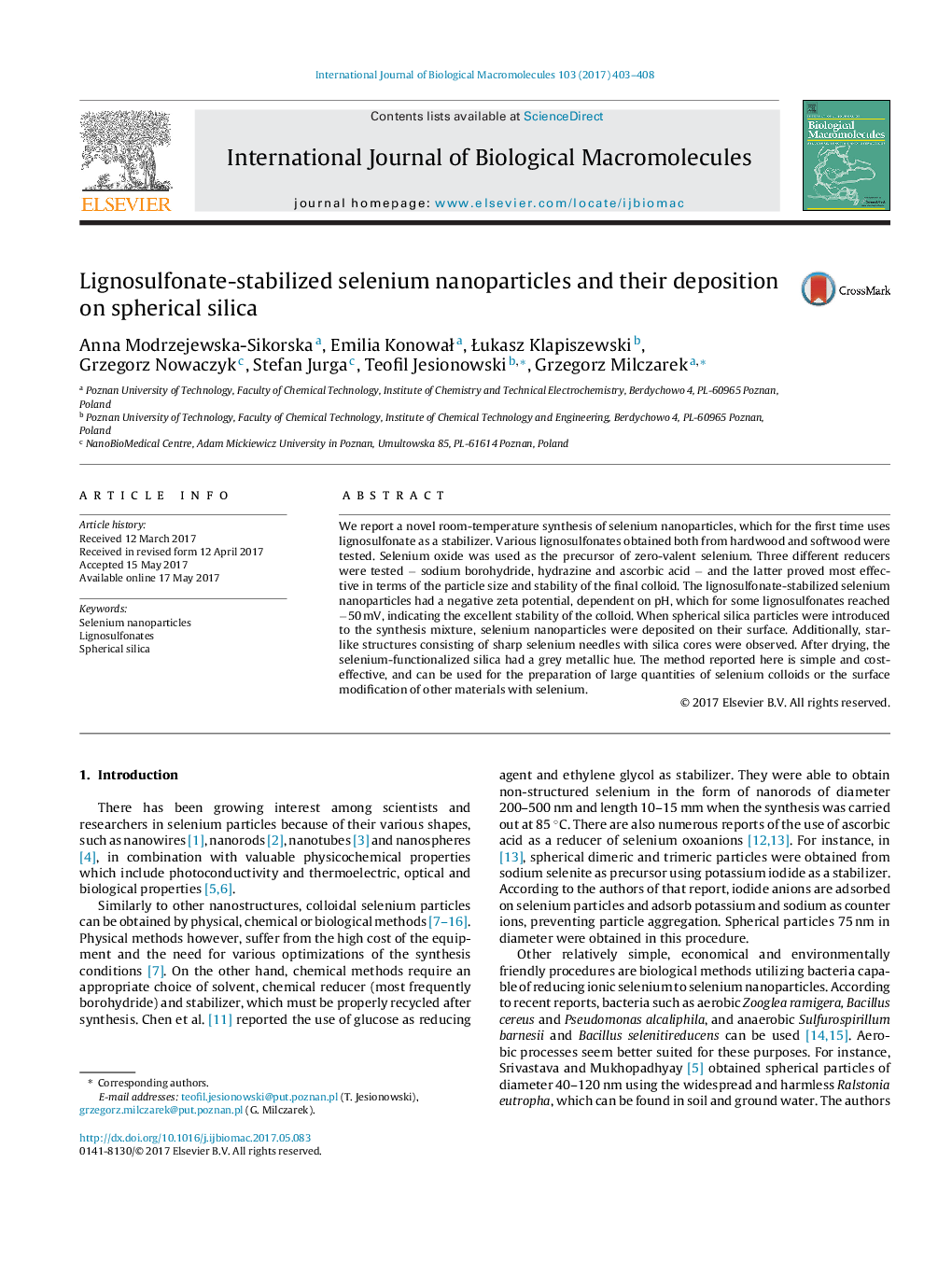| Article ID | Journal | Published Year | Pages | File Type |
|---|---|---|---|---|
| 5511868 | International Journal of Biological Macromolecules | 2017 | 6 Pages |
Abstract
We report a novel room-temperature synthesis of selenium nanoparticles, which for the first time uses lignosulfonate as a stabilizer. Various lignosulfonates obtained both from hardwood and softwood were tested. Selenium oxide was used as the precursor of zero-valent selenium. Three different reducers were tested â sodium borohydride, hydrazine and ascorbic acid â and the latter proved most effective in terms of the particle size and stability of the final colloid. The lignosulfonate-stabilized selenium nanoparticles had a negative zeta potential, dependent on pH, which for some lignosulfonates reached â50Â mV, indicating the excellent stability of the colloid. When spherical silica particles were introduced to the synthesis mixture, selenium nanoparticles were deposited on their surface. Additionally, star-like structures consisting of sharp selenium needles with silica cores were observed. After drying, the selenium-functionalized silica had a grey metallic hue. The method reported here is simple and cost-effective, and can be used for the preparation of large quantities of selenium colloids or the surface modification of other materials with selenium.
Related Topics
Life Sciences
Biochemistry, Genetics and Molecular Biology
Biochemistry
Authors
Anna Modrzejewska-Sikorska, Emilia KonowaÅ, Åukasz Klapiszewski, Grzegorz Nowaczyk, Stefan Jurga, Teofil Jesionowski, Grzegorz Milczarek,
